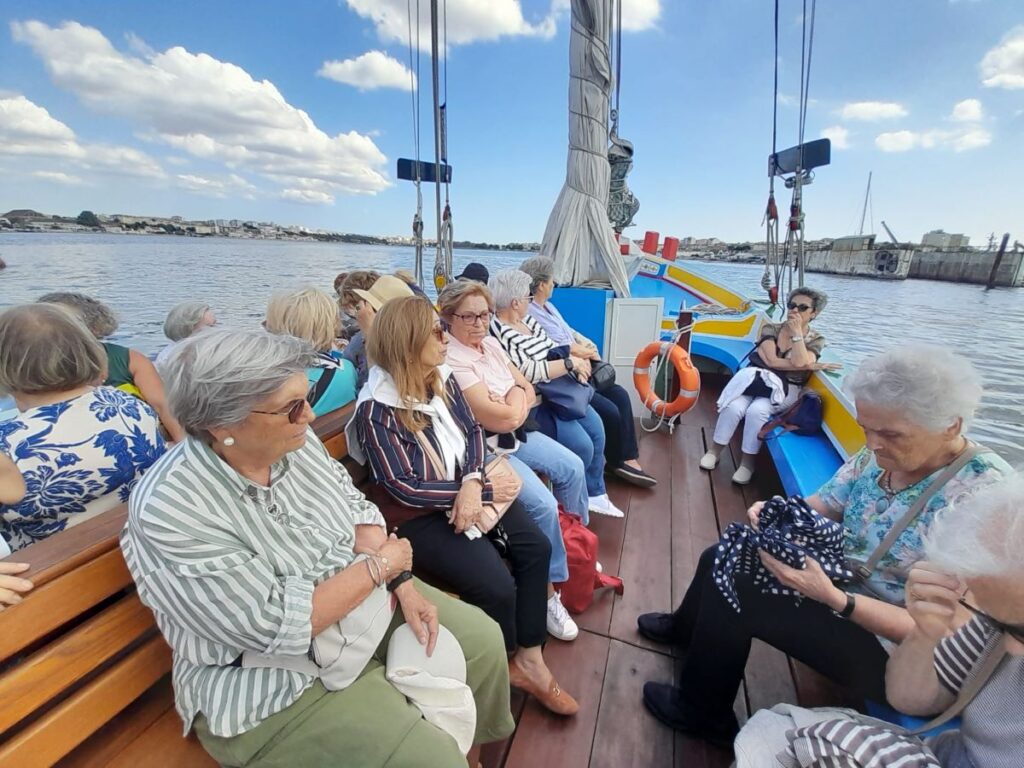The tour of Seixal began with a visit to the Corroios Tide Mill, which was built by King Nuno Álvares Pereira in 1403 and is one of the few tide mills still in working order. It currently serves as the centre of the Seixal Municipal Ecomuseum.
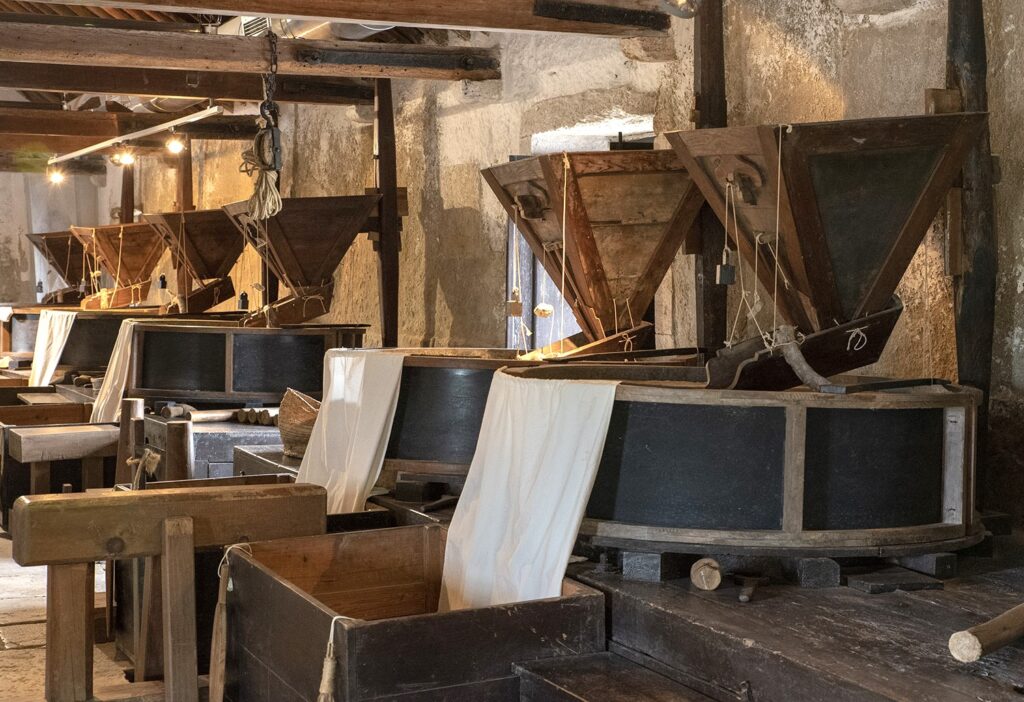
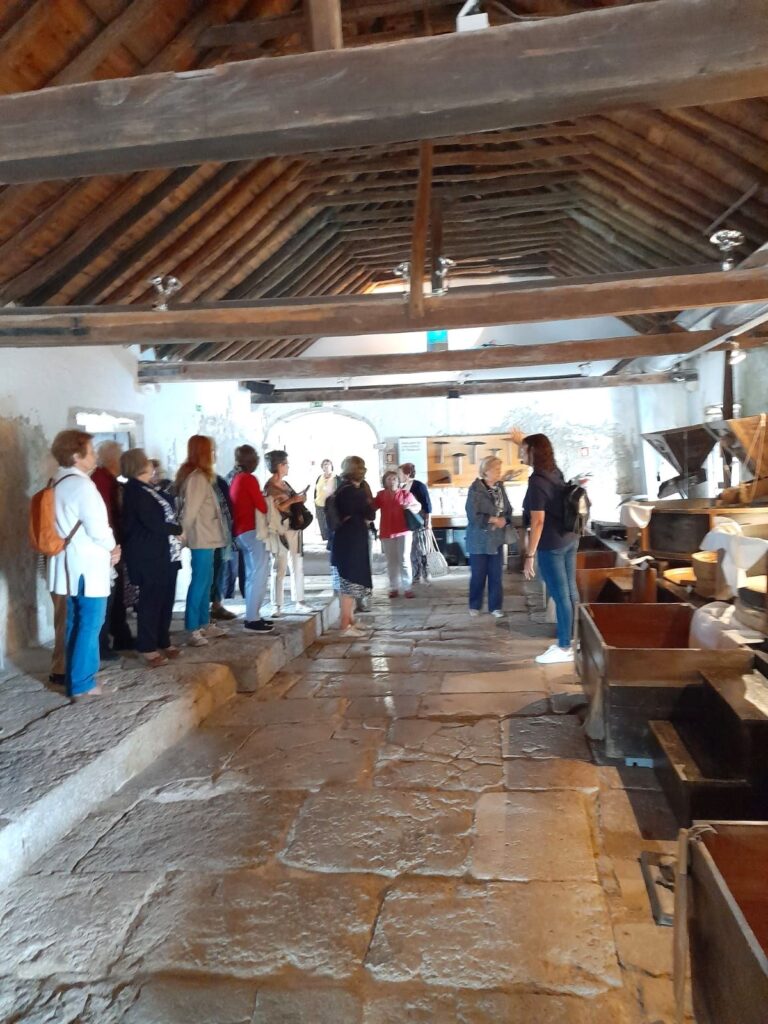
Next we went to Quinta da Fidalga, which was founded in the 15th century. An agricultural and recreational property set in a magnificent bay, it was characterised by its citrus groves, some of which are still standing today. Vasco da Gama and his brother Paulo da Gama lived here for some time. Since 2001, the estate has been owned by Seixal Municipal Council. Inside the palace is a chapel lined with Portuguese tiles from the 18th century.
Above the chapel door is a frieze with a detailed sculpture depicting the coat of arms of the Miranda Henriques family.
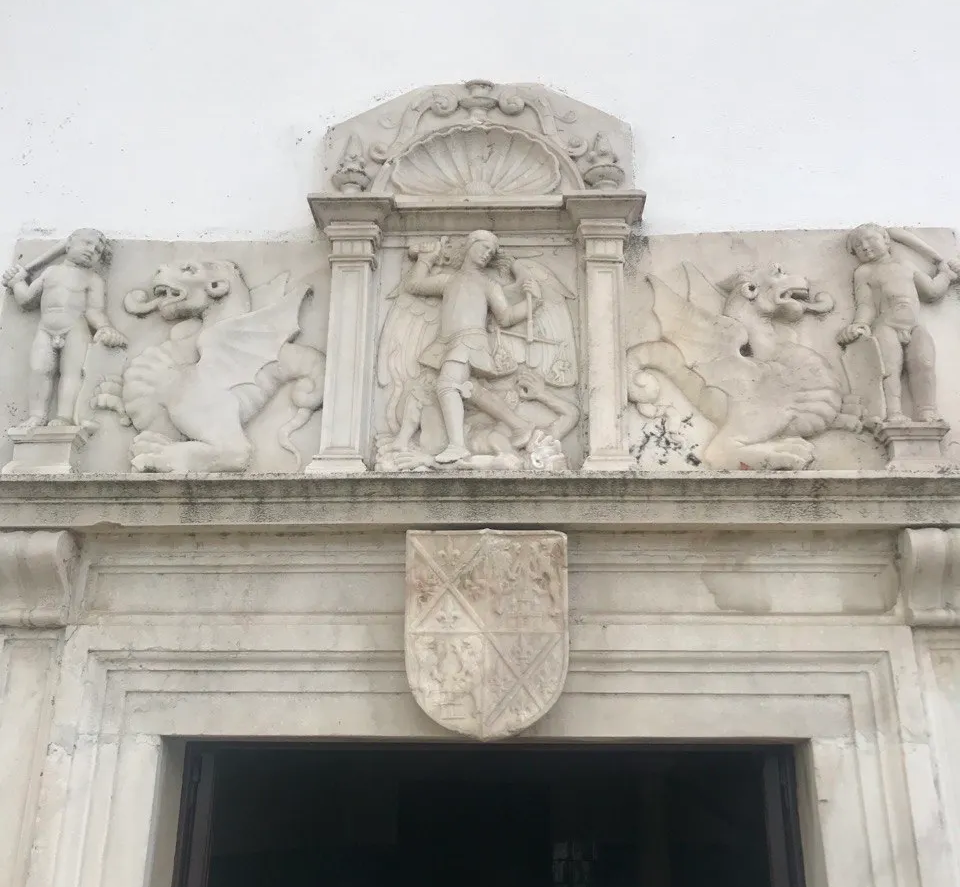

In its beautiful gardens, with streets lined with Hispano-Arabic tiles, there is an 18th century chapel, several fountains with sculptures, fountains and lakes made from fragments of different inlaid materials such as shells, pebbles, glass, bricks – the well-known embrechado technique – such as the Neptune, Mermaid and Spring Fountains.
The Neptune Fountain, with geometric designs made from small bricks, stones and tiles from the 17th and 18th centuries, has a sculpture of a crocodile and the god Neptune inside.
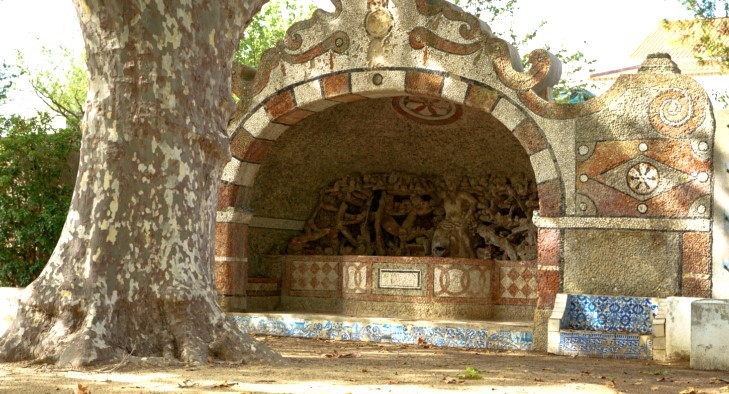
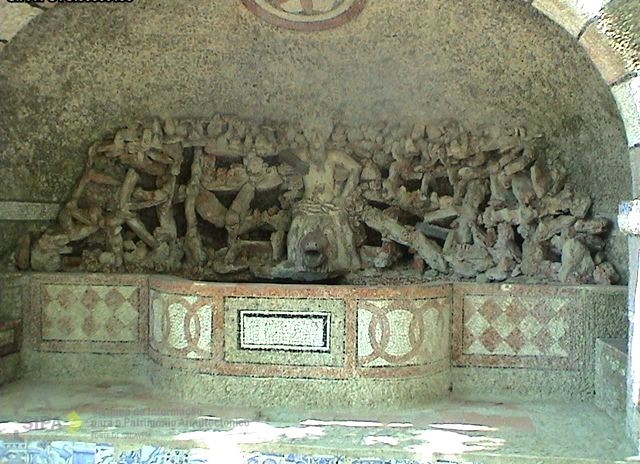
Fountain of the Sirens, on which the tails of these mythological characters are painted with musical instruments of the time. In the centre, a statue representing a female figure.
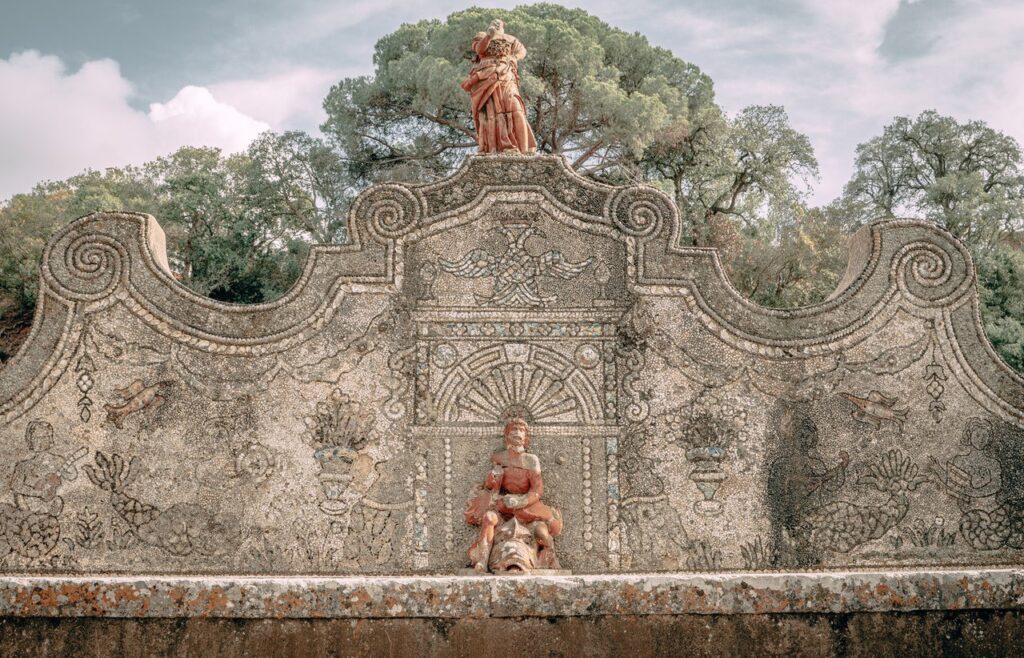
The Spring Fountain, with drawings of caravels in an allusion to the caravels that took the Portuguese to India.
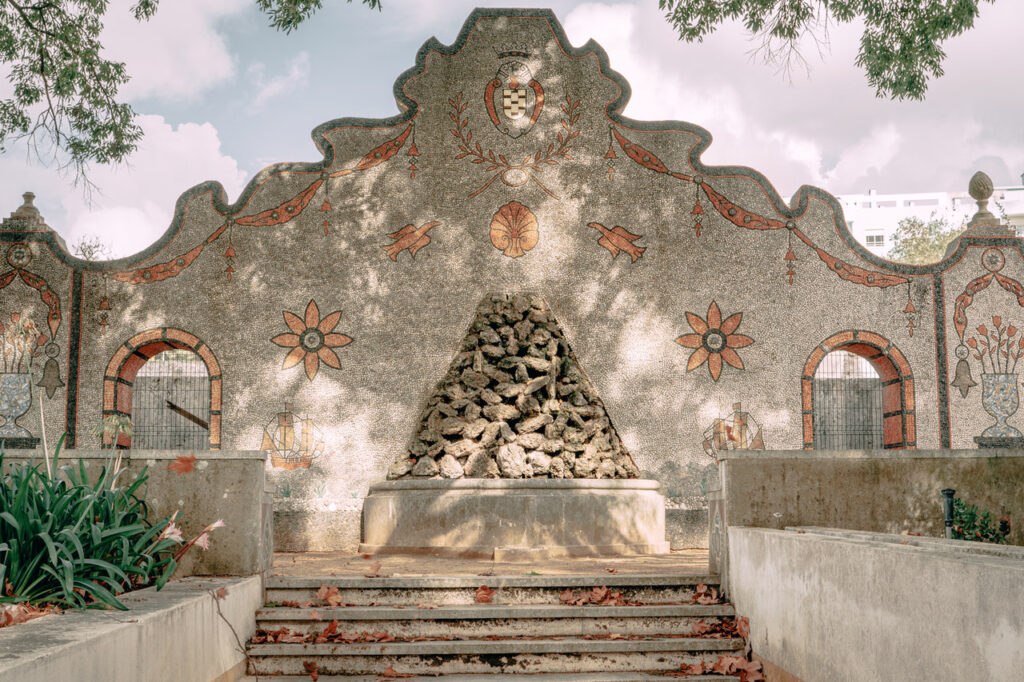
The estate has a sophisticated irrigation system and its Tidal Lake can be considered a unique monument in European hydraulic architecture. The water flows in and out according to the rise or fall of the Tagus river, which is connected to the lake by canals. The lake is surrounded by a wrought iron railing, and around it are benches covered in blue tiles, where the ladies used to sit while the gentlemen practised “lounge” fishing when the lake filled up with the tide.
After lunch, we went to see the A. Palaio Popular Printing House, founded in 1955 by António Palaio, which has been in business for 50 years, continued by his sons, professional printers and composers. Today, it is a teaching space that allows you to learn about old printing techniques, reusing old machines (the newest one is from 1944) that still work perfectly. Mr Eduardo Palaio demonstrated how, in the area of composition, hundreds of vignettes combined to create beautiful images. He also showed us how the only replica of the Gutenberg press in Portugal works, explaining in detail the various stages of printing.
We ended the day with a beautiful ride on the former Seixal Bay Frigate Boat along the Tagus River.
